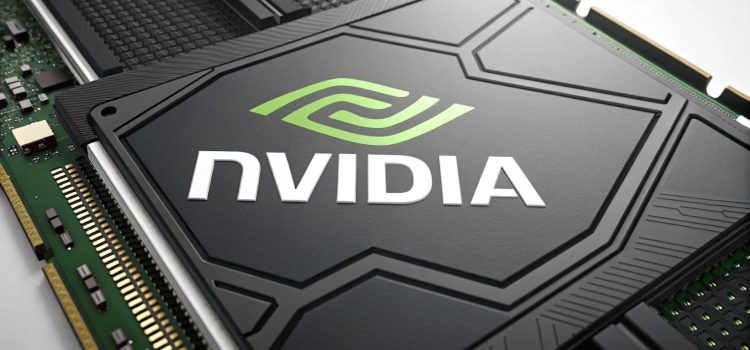
Most people know Nvidia as the company behind expensive graphics cards for gamers, but it also helped create the technological foundation for the AI revolution. Nvidia CEO Jensen Huang’s contrarian bet on parallel computing made this happen.
In The Thinking Machine, Stephen Witt details the rewards Huang reaped by spending over a decade investing in academic computing tools that seemed commercially worthless. That positioned Nvidia perfectly for the moment when AI systems needed massive parallel processing power. Witt also provides an inside look at Huang’s unconventional leadership methods and the potential threats to Nvidia’s success. Keep reading for a full overview of The Thinking Machine‘s ideas.
Overview of The Thinking Machine by Stephen Witt
The most influential company in modern artificial intelligence (AI) is Nvidia (pronounced “en-VID-ee-uh”), which operates behind the scenes, building computer chips called graphics processing units (GPUs) that power everything from video games to tools like ChatGPT. In The Thinking Machine, Stephen Witt attributes Nvidia’s success to CEO Jensen Huang’s decades-long bet on one contrarian idea: that the future of computing would require processing thousands of calculations simultaneously, rather than one at a time. This approach, called parallel processing, allows computers to break complex problems into smaller pieces and solve all of those pieces at the same time, unlike traditional chips that work through each piece sequentially.
Huang’s investment in this seemingly niche technology—at a time when competitors like Intel focused on making traditional processors faster—put Nvidia in the right place at the right time to power the AI revolution. AI systems called neural networks learn by analyzing enormous datasets and adjusting millions of internal connections based on the patterns they discover. When researchers discovered that Nvidia’s computing chips could dramatically accelerate the training of these AI systems, it created explosive demand for the parallel processing capabilities that only Nvidia could provide at scale.
Jensen Huang’s Journey From Immigrant to Tech CEO
Huang’s path to becoming one of the world’s most powerful tech CEOs began with early life experiences that would shape his approach to leadership under pressure. Born in Taiwan in 1963 and raised partly in Thailand, Huang was sent to the United States at age 10, where a family miscommunication landed him at a Kentucky boarding school that was more like a reform institution than the elite academy his parents had envisioned. Facing bullying and harsh living conditions, Huang learned self-reliance and resilience. After reuniting with his family in Oregon, he excelled academically while working as a busboy at the restaurant chain Denny’s. He also discovered a passion for table tennis that led to national-level competition.
Huang attended college at Oregon State University, where he met his future wife, Lori Mills, as lab partners in an engineering class. After graduating with honors in electrical engineering, he joined the Silicon Valley tech scene, working first at AMD and then at LSI Logic. There, he rose to lead a division with $250 million in revenue while pursuing a master’s degree in electrical engineering from Stanford at night.
At LSI Logic, Huang became friends with two Sun Microsystems engineers, Chris Malachowsky and Curtis Priem. When the trio decided to start Nvidia in 1993, it was a big risk. Huang was 30 years old with a young family and a career at LSI Logic, where he was being groomed as a potential CEO. The three engineers saw an opportunity in the emerging PC gaming market that others were ignoring. Meeting at a San Jose Denny’s restaurant, the same chain where Huang had worked as a teenager, they planned a company that would make 3D graphics chips for video games. The decision to target the gaming market positioned Nvidia perfectly for the parallel processing revolution that would later power AI.
What Is Parallel Processing?
In developing the technology that would power the AI revolution, Nvidia pioneered an approach to computing that would challenge how computers process information. But this breakthrough began with a much more practical problem: making video games look better. When Huang and his co-founders started Nvidia in 1993, they wanted to build specialized chips to render the complex 3D graphics that games like Quake and Half-Life demanded. To create realistic visual effects, these graphics processing units (GPUs) needed to calculate the color and lighting for thousands of pixels simultaneously. This required a different approach from traditional chips, which operated sequentially, performing one calculation at a time, albeit very quickly.
Witt explains that while most computers relied on central processing units (CPUs) that worked through tasks step by step, Nvidia’s GPUs broke complex visual problems into thousands of smaller pieces and solved them all at once. This approach, called parallel processing, wasn’t new in theory—scientists had been experimenting with it for years—but it remained difficult to implement reliably. Most attempts at parallel computing had been commercial failures, but Nvidia succeeded because it had a clear, immediate application to focus on: rendering video game graphics in real time.
How Researchers Discovered the Broader Potential
Parallel processing’s potential became apparent when researchers discovered that Nvidia’s gaming chips could be repurposed for entirely different computational tasks. In 2000, Ian Buck, a graduate student at Stanford, wanted to create an immersive gaming experience. He chained together 32 of Nvidia’s chips to display a single game, Quake III, across eight large projectors, creating an ultra-high-definition gaming wall that filled an entire room. Witt explains that the calculations required to render just 30 frames of the game would take a human working with pencil and paper about 16,000 years to complete. But Buck’s array of Nvidia cards performed these calculations every single second. For about $20,000, a fraction of what traditional supercomputers cost, he had built a machine with extraordinary processing power.
Buck and other researchers began “hacking” Nvidia’s gaming chips to trick them into solving scientific problems instead of rendering explosions and car chases for video games. They used the cards’ existing programming tools to redirect their parallel processing power toward tasks like financial modeling, weather simulation, and medical imaging. Soon, academics were bulk-purchasing Nvidia’s GeForce cards and repurposing them as affordable scientific instruments. A new market was emerging, and it didn’t escape Huang’s notice: Witt notes that around 2004, Huang began recruiting researchers like Buck to join Nvidia.
Why Huang Bet Everything on Parallel Computing
Nvidia’s decision to bet on parallel computing was based on more than creative uses for gaming chips: It was driven by an insight into the future of computing. Huang realized that existing approaches to making computers faster were approaching physical limits. For decades, chip companies had been shrinking the transistors inside microchips, but they were becoming so small that they’d soon leak electricity and slow computers down. If computers were going to continue advancing, the fundamental approach to computing would have to change. While competitors like Intel continued to focus on making traditional processors faster, Huang saw parallel processing as the path forward.
The hardware to make parallel processing work at scale was only half of the solution. Witt explains that parallel processing was incredibly difficult to program. Writing software for thousands of simultaneous processes required completely different thinking than traditional sequential programming, and most developers found it so challenging that they avoided parallel computing altogether. Nvidia changed this with CUDA (Compute Unified Device Architecture), a software platform the company launched in 2006 to enable developers to use familiar tools, like the C programming language, to access the parallel processing power of GPUs.
Huang’s belief that parallel processing was the way forward led him to invest heavily in CUDA. He was pursuing what he called a “zero-billion-dollar market,” building technology for customers who didn’t yet exist, in hopes that pushing parallel processing forward (and making it easier to use) would create massive demand. Witt reports that Huang knew competitors might eventually copy Nvidia’s hardware, but they would be starting from scratch on the software side. So Nvidia spent years building tools, libraries, and documentation that made its chips easy to use.
By investing heavily in parallel computing infrastructure and building a comprehensive software ecosystem around it, Nvidia had inadvertently created the perfect platform for the AI revolution that was waiting in the wings. The foundation was now set for Nvidia to become the essential infrastructure provider for AI—but only because they had spent over a decade building capabilities that seemed commercially worthless at the time.
Why AI Changed Everything
What Huang and his team couldn’t fully anticipate was how perfectly AI breakthroughs would align with the parallel processing infrastructure they had already built. According to Witt, the AI revolution that transformed Nvidia from a graphics company into one of the world’s most valuable tech firms began when researchers discovered that a particular type of computer learning model called a neural network could achieve unprecedented results, but only when powered by exactly the kind of massive parallel processing that CUDA made accessible.
Neural networks—computer systems designed to loosely mimic how the human brain processes information—had existed in theory for decades, but they remained largely impractical until researchers discovered how to train them effectively using enormous amounts of data and computational power. Unlike traditional software, which follows predetermined rules, neural networks learn by analyzing patterns in vast datasets through millions of simultaneous calculations. This learning process, called “training,” requires exactly the type of massive parallel processing that Nvidia’s GPUs were designed to handle.
The AlexNet Breakthrough That Validated Nvidia’s Strategy
In 2012, researchers at the University of Toronto provided proof of neural networks’ potential using Nvidia’s technology. According to Witt, a team of researchers led by Alex Krizhevsky used two off-the-shelf Nvidia graphics cards running CUDA software to build a neural network for image recognition called AlexNet. This network didn’t just perform slightly better than previous approaches; it represented a fundamental leap forward that made other methods obsolete.
What made AlexNet revolutionary wasn’t just its performance, but what it revealed about the relationship between computational power and AI capability. The researchers had discovered that the more parallel processing power they could apply to training neural networks, the better the results became. Earlier that year, Witt notes, researchers at Google had trained a neural network to identify cat videos using 16,000 traditional processors. Krizhevsky’s team achieved world-class results with just two Nvidia circuit boards.
While the broader AI research community was initially slow to grasp the full implications of AlexNet, Witt explains that Huang immediately recognized it as a huge opportunity for Nvidia’s parallel computing architecture. He swiftly redirected the entire company toward “deep learning,” the type of neural network training demonstrated by AlexNet, and declared Nvidia an “AI company” almost overnight. This rapid, decisive pivot proved crucial to seizing the emerging opportunity that would transform both Nvidia and the technology industry.
How Transformers Created the Language AI Revolution
The next major breakthrough came in 2017, when Google researchers developed transformer architecture. According to Witt, transformers are a type of neural network designed to process language by analyzing the relationships among all of the words in a text simultaneously, rather than processing them one at a time. Instead of reading a sentence from beginning to end like humans do, transformers can examine every word in relation to every other word at the same time. This parallel processing capability made transformers perfectly suited for GPU acceleration—meaning they could take full advantage of Nvidia’s chips’ ability to perform thousands of calculations simultaneously—creating another massive opportunity for Nvidia.
Transformers enabled the development of large language models (LLMs), AI systems that use transformer architecture to process and generate language after being trained on vast amounts of text. Models like OpenAI’s GPT series required unprecedented computational power to train. But researchers discovered that as these models grew larger and consumed more computational resources, they became dramatically more capable. Models meant to predict the next word in a sentence could translate languages, write code, or explain scientific concepts. Witt explains that this created a feedback loop: More computing power led to more capable AI, which justified greater investments in infrastructure, all of which benefited Nvidia.
How AI Factories Became Essential Infrastructure
The computational demands of transformer-based AI models created a new challenge. Witt notes that traditional computing tasks could be handled by a single powerful machine. But training the most advanced LLMs required breaking the work into millions of pieces and coordinating calculations across thousands of chips in real time. Huang’s solution was what he envisioned as “AI factories,” specialized data centers designed specifically for training and running AI systems. These represented a new form of industrial infrastructure that would consume raw data and produce intelligence, in much the same way that traditional factories consume raw materials and produce goods.
The economic implications of this infrastructure shift were unprecedented. Training the most advanced AI models required computational resources measured in thousands of GPU-years (work that would take a single chip thousands of years to complete), but could be accomplished in weeks or months when distributed across massive parallel systems. Witt notes this made the barrier to entry for developing state-of-the-art AI systems so high that only the largest technology companies could compete: Businesses like Microsoft, Google, and Amazon became locked in an arms race for computational capacity, spending billions on Nvidia hardware to build ever-larger AI factories and maintain their competitive advantage.
How Huang’s Unconventional Leadership Enabled Nvidia’s Success
By the time AI breakthroughs like AlexNet and transformers created an explosive demand for parallel processing, Nvidia was uniquely positioned to capitalize on it, but not just because of its technology. According to Witt, the difference between Nvidia and its competitors often came down to leadership execution: how quickly it pivoted when opportunities emerged, how it maintained focus during years of losses, and how it scaled operations when the time came.
Huang’s ability to make these crucial decisions stems from his leadership approach, forged during Nvidia’s early struggles for survival. The company nearly went bankrupt in 1996 when their first product flopped, forcing Huang to lay off half the workforce and bet the company’s remaining funds on untested chips. These near-death experiences, Witt explains, shaped Huang’s demanding leadership philosophy, built around three core principles that enabled Nvidia to execute when the AI revolution created unprecedented opportunities.
Principle 1: Huang Uses Public Confrontation to Drive Performance
First, Huang deliberately confronts underperforming employees in front of large groups rather than handling problems privately, turning individual mistakes into organization-wide learning experiences. According to Witt, in one notorious incident from 2008, Huang spent over an hour publicly berating the architect responsible for a flawed graphics chip, with more than a hundred executives watching in the company cafeteria. Witt notes that some employees describe Huang’s approach as “verbal abuse,” but Huang employs this method because he believes public accountability creates stronger motivation than private feedback.
Despite the intense public criticism he delivers, Huang combines his demanding standards with genuine care for his employees. Witt says that Huang remembers personal details about employees’ lives, provides support during family crises, and rarely fires people for performance issues—partly so employees won’t be afraid to take risks. This combination of demanding standards with personal loyalty creates what Huang’s employees describe as an overwhelming desire not to disappoint him, generating the intense commitment necessary for Nvidia’s ambitious technical goals.
Principle 2: Huang Eliminates Information Barriers Through Flat Structure
Second, to avoid missing critical information, Huang maintains more than 60 direct reports, far exceeding the eight to 12 that business experts recommend, because he doesn’t want information to be filtered through layers of management before reaching him. According to Witt, Huang refuses to designate a second-in-command or create hierarchical structures that might slow decision-making or allow bureaucratic power centers to form within the company.
To make Nvidia’s flat structure work, Huang requires every employee to send him a weekly email summarizing their five most important activities. With more than 30,000 employees, this generates thousands of emails each week that Huang can’t possibly read. But Witt explains that Huang samples broadly enough to remain aware of what’s happening throughout Nvidia, allowing him to spot problems and opportunities that might be missed in a traditional corporate hierarchy. This approach serves Huang’s goal of staying directly connected to technical and operational details across the company, so that when critical decisions need to be made, he already has the information and relationships needed to act quickly.
Principle 3: Huang Cultivates Urgency to Enable Bold Decisions
Third, Huang cultivates what we’ll call a “thirty days to live” mentality throughout Nvidia, reminding employees that the company is always on the verge of failure. While this philosophy originated from Nvidia’s near-bankruptcy in the 1990s, Witt explains that Huang has preserved this mindset even during periods of success because it serves a specific purpose: It justifies taking risks that more comfortable organizations might avoid. When employees believe the alternative to aggressive action is certain death, they’re willing to make dramatic changes quickly.
According to Witt, this philosophy also gives Huang cover to resist short-term pressures from investors. When the company operates in permanent survival mode, it can justify investments that don’t pay off immediately as necessary for long-term survival, like the decade-long commitment to parallel computing. This approach enabled Nvidia to maintain strategic focus during years of losses, positioning the company to seize the moment when AI demand exploded.
What Threatens Nvidia’s Dominance?
Nvidia’s technological advantages and Huang’s leadership have created what appears to be an unassailable market position, but Witt identifies several significant vulnerabilities that could threaten the company’s dominance. These challenges range from geopolitical risks and manufacturing dependencies to Huang’s refusal to engage with AI safety concerns, plus practical questions about energy consumption and corporate succession planning.
Nvidia’s Dangerous Dependence on Taiwan
The first vulnerability Witt identifies is Nvidia’s dependence on Taiwan Semiconductor Manufacturing Company (TSMC) to produce its most advanced chips. TSMC has technical expertise and manufacturing precision that would take competitors years or decades to replicate.
TSMC’s primary operations are in Taiwan, a self-governing island that China claims as its territory and has threatened to take by force. Witt explains that China’s increasingly aggressive stance toward Taiwan creates a direct threat to Nvidia’s business model and the broader AI industry that depends on these chips. Any military conflict or economic disruption in Taiwan could immediately halt production of the processors that power the global AI revolution.
Despite his Taiwanese heritage and cultural connections that helped build Nvidia’s relationship with TSMC, Huang publicly downplays these risks. But Witt suggests that this dependence represents one of the most significant long-term challenges facing both Nvidia and the AI ecosystem as a whole. He also notes that it has led to discussion of a “silicon shield”: the idea that the world’s reliance on Taiwanese semiconductor manufacturing might deter Chinese aggression by making the costs of conflict too high for China to bear.
Huang’s Refusal to Engage With AI Safety Concerns
Another critical vulnerability Witt identifies is Huang’s complete dismissal of concerns about the potential risks of artificial intelligence. While prominent researchers have expressed serious concerns about the potential for AI systems to become uncontrollable or even pose existential risks to humanity, Huang’s position is that AI systems are simply processing data and aren’t a threat to human welfare or survival. According to Witt, when he pressed Huang about the potential dangers of the AI systems that Nvidia’s chips enable, Huang refused to engage with the substance of these concerns. Instead, Huang became angry, yelling at Witt and calling his questions ridiculous.
Witt reveals that other Nvidia executives show a similar lack of concern or are reluctant to contradict their CEO. One source told Witt that the executives seem more afraid of Huang yelling at them than they are of possibly contributing to human extinction. Witt presents this as a fundamental tension in the current AI landscape: While some of the most respected researchers in artificial intelligence are warning about potentially catastrophic risks, the CEO of the company enabling these developments refuses to seriously consider such concerns. This suggests that legitimate safety considerations may not receive adequate attention within the company that controls the infrastructure powering AI development.
Sustainability Questions About Nvidia’s Future
Finally, Witt highlights two critical challenges that could limit the continued growth of AI systems powered by Nvidia’s technology: environmental impact and organizational continuity.
Energy Consumption
The first challenge is environmental. Data centers filled with thousands of GPUs consume massive amounts of electricity, contributing to growing concerns about AI’s environmental impact. Companies like Google and Microsoft have seen their carbon emissions increase dramatically due to their expanding AI infrastructure. Witt notes that early AI systems consumed power comparable to household appliances, but current systems require enough electricity to power entire neighborhoods. As AI models continue to grow in size and capability, their energy requirements are expanding exponentially, raising questions about whether current development trajectories are environmentally sound.
Succession at Nvidia
The second challenge is organizational. Witt reveals that Nvidia has no clear succession plan for Jensen Huang. His eventual departure could create significant challenges for a company so closely identified with its leader’s vision. The flat organizational structure that has served Nvidia well under Huang’s leadership may become a liability in transition scenarios, since there is no clear second-in-command, and more than 60 people report directly to the CEO.
This concentration of decision-making authority in a single individual creates vulnerabilities for a company whose market value depends heavily on continued strategic vision. Given Nvidia’s central role in AI development, any disruption to its leadership or strategic direction could have far-reaching implications for the pace and direction of AI progress worldwide.






